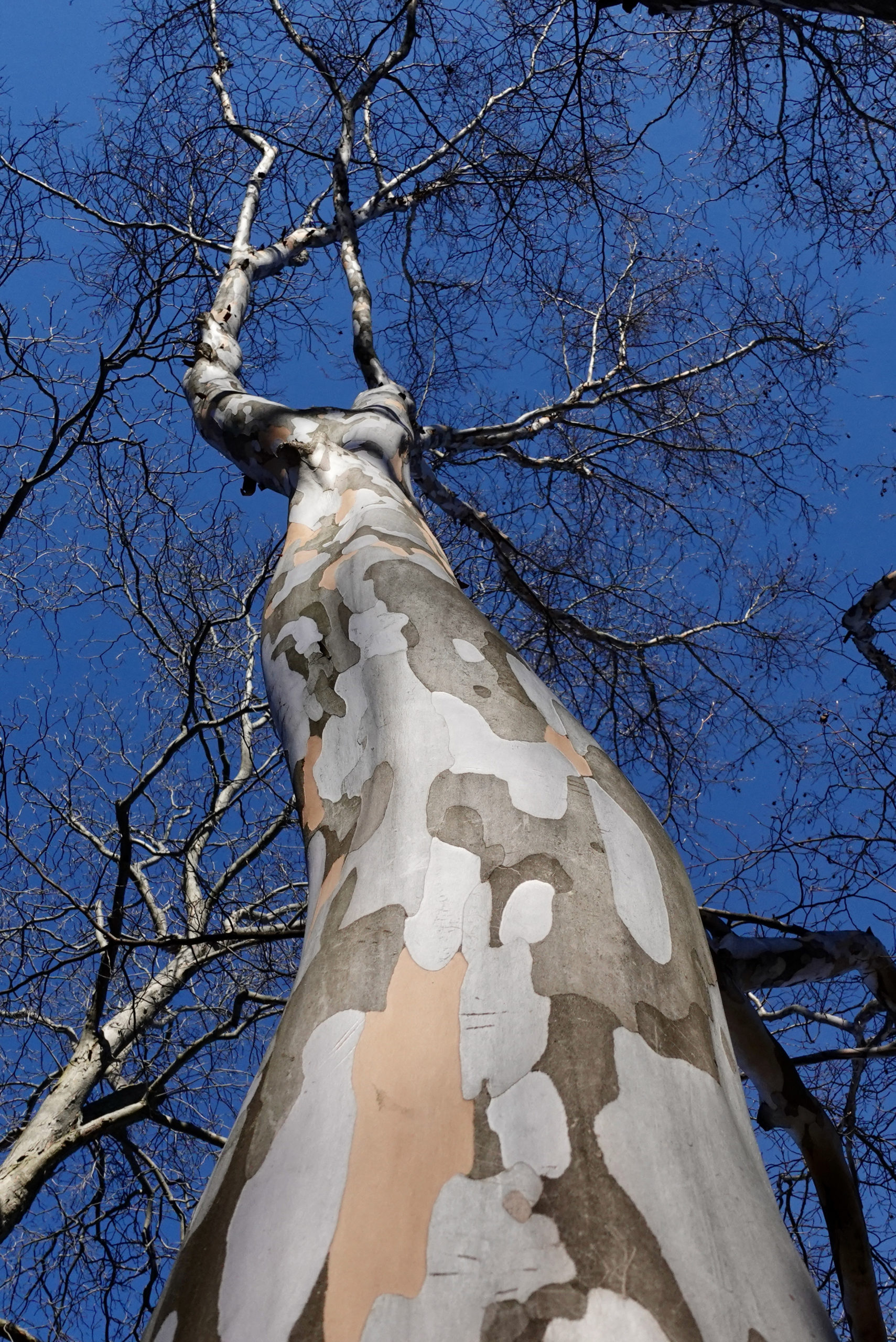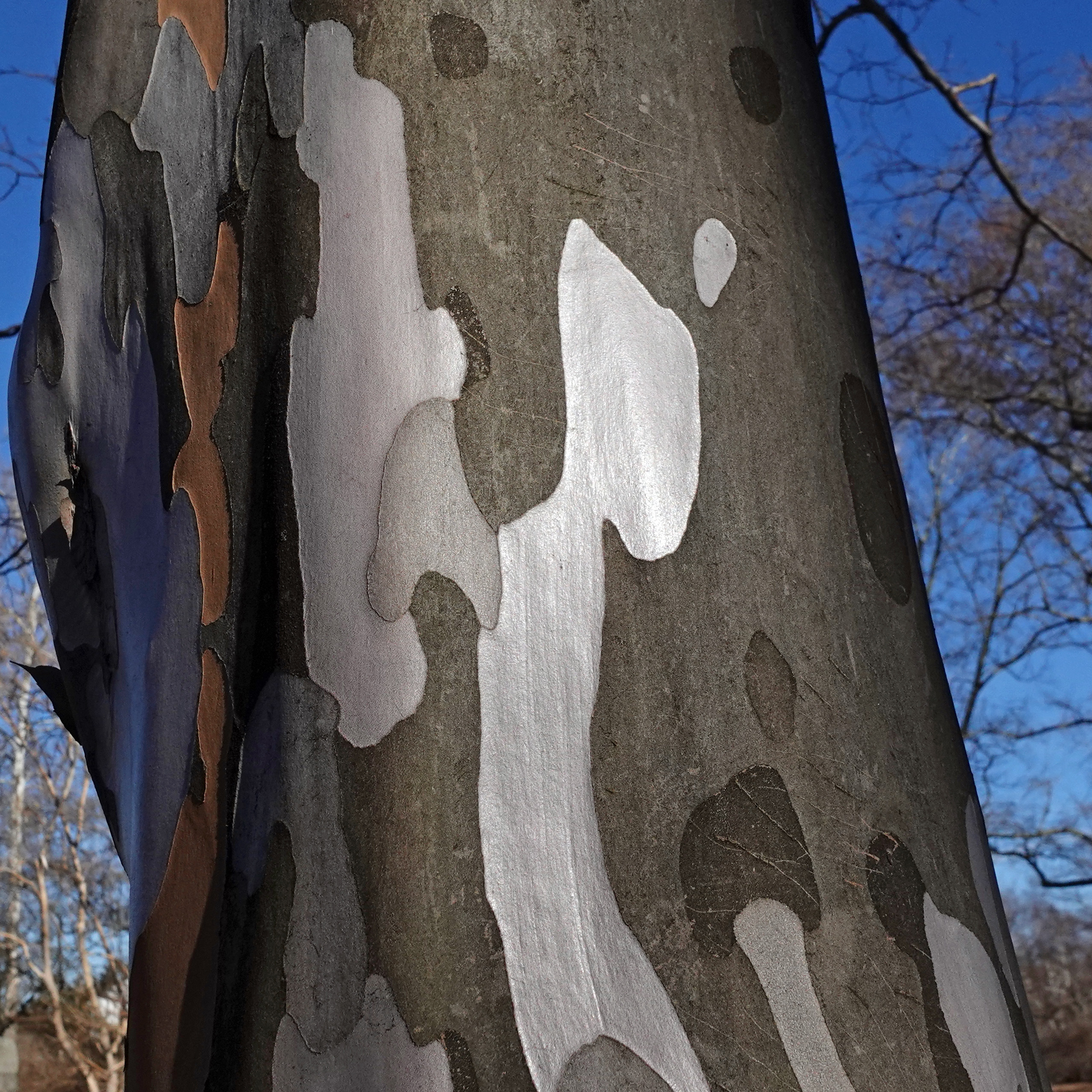Every once in a while, a tree I often pass catches me off guard and astonishes me. Such was the case with a Korean stewartia (노각나무) near Centre Street Gate. Never have I seen such striking winter bark at the Arnold Arboretum (and I have seen a lot of striking bark). Once you see this tree, you can’t look away. The typical (and always beautiful) large puzzle pieces of bark of varying ages and patinas in beige, dark green, and grey are there. But, there was something else I had never seen: panels of bark that radiated a look of brushed aluminum. Standing there, I was convinced I would be able to see my reflection as in a mirror (alas, this is not the case).

This Stewartia pseudocamellia specimen (8-43*A) has parents that harken from the top of Bussey Hill (seed mom = 11440*A; pollen dad = 11440*B) and was accessioned as a seed in early 1943. The maternal and paternal trees, though, are the ones with some real heritage! Both were collected as seeds by Arnold Arboretum plant explorer Ernest Henry Wilson in 1917 at the foot of Mount Chiri-san (지리산) in Gyeongsangnam-do (경상남도) in what is now South Korea. After a bit of a journey, these two seeds arrived at the Arboretum’s propagation operation in early 1918.

I checked on 8-43*A’s parents to see if their bark was as amazing as their remarkable offspring. Very nice, but alas, not even close. I suspect that the relative sunniness of 8-43*A’s spot may have something to do with this, as the parents grow in a more shaded location. In any event, this tree is easily found and worth an immediate trip to the Arboretum. And if you miss the bark this winter, there are always the spectacular flowers (so characteristic of the tea family) to see in July. But, my advice: don’t miss this tree and its bark soon!
